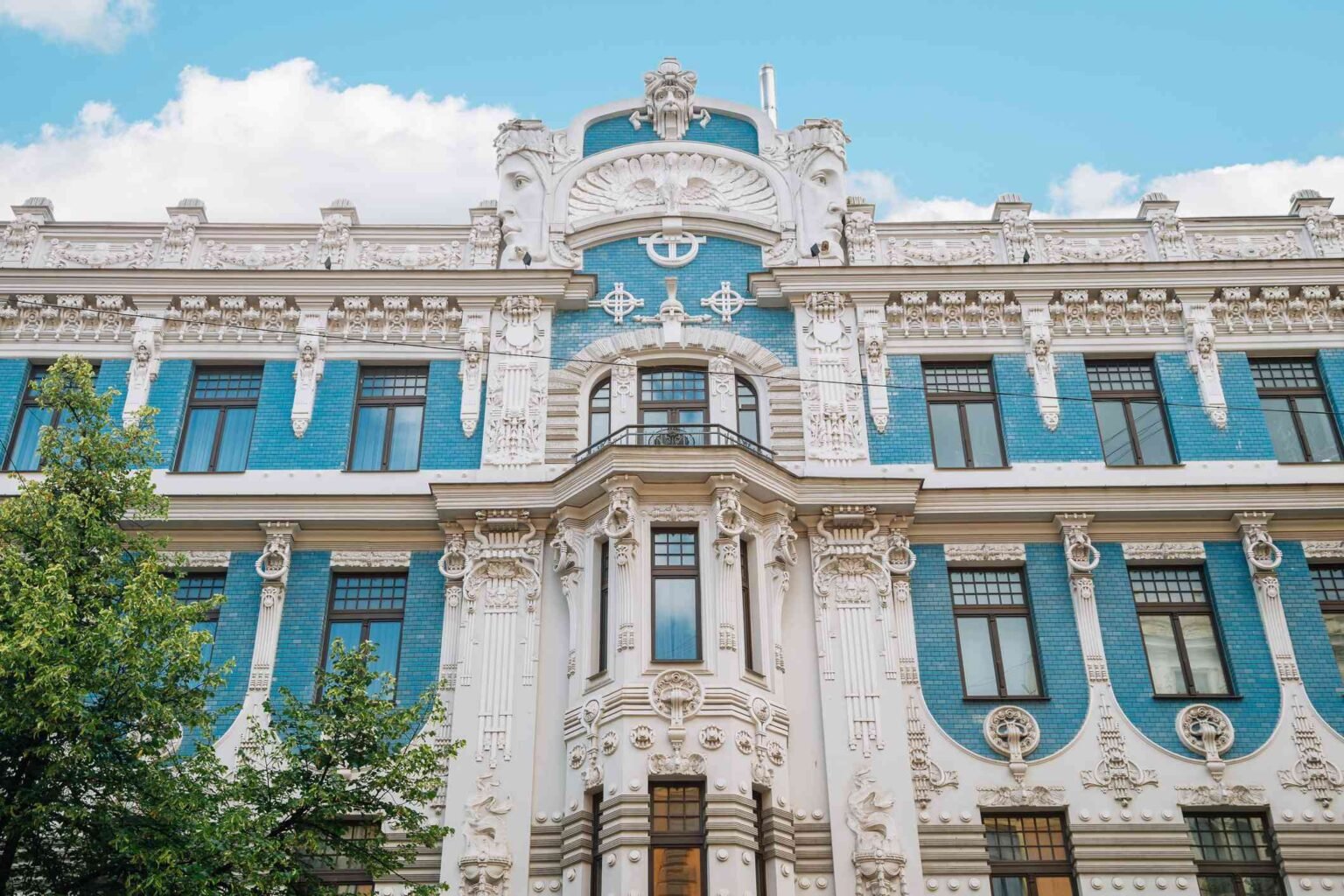Art nouveau is an aesthetic movement inspired by the natural world that produced a highly expressive style of architecture, interior design, furniture, decor, glasswork, jewelry, and visual arts between 1890 and 1910. Art nouveau architecture is known for its use of organic, sculptural shapes and curved lines, floral and animal motifs, and intricate, decorative use of glass and metal.
Art nouveau’s broad influence across architecture, design, and visual arts allows for total works of art. Every building has flourishes—from windows to door handles—that harmonize to create an immersive art nouveau style.
History of Art Nouveau Architecture
Art nouveau (“New Art”) emerged in Belgium and France in the 1890s, continuing through the turn of the 20th century until World War I. Popularized thanks to the 1900 Paris Exposition Universelle, art nouveau spread throughout Europe and to the United States.
The impetus behind art nouveau design was to break with tradition and explore newer, freer forms of visual expression. The Arts and Crafts Movement influenced it in its embrace of quality and craftsmanship.
But where Arts and Craft Movement designers sought to eschew the technologies that allowed Victorian-era mass production, art nouveau designers and architects leveraged Industrial Age technologies to realize highly stylized designs with artistic qualities.
While art nouveau is prevalent in Europe and the United States, it is considered an international style with various names. The term art nouveau first appeared in Belgium and is used in France, where offshoots of the style may also be referred to as belle epoque and style Guimard. In Spain, it’s called modernism, and in Germany, it’s called Jugendstil (“Youth Style”).
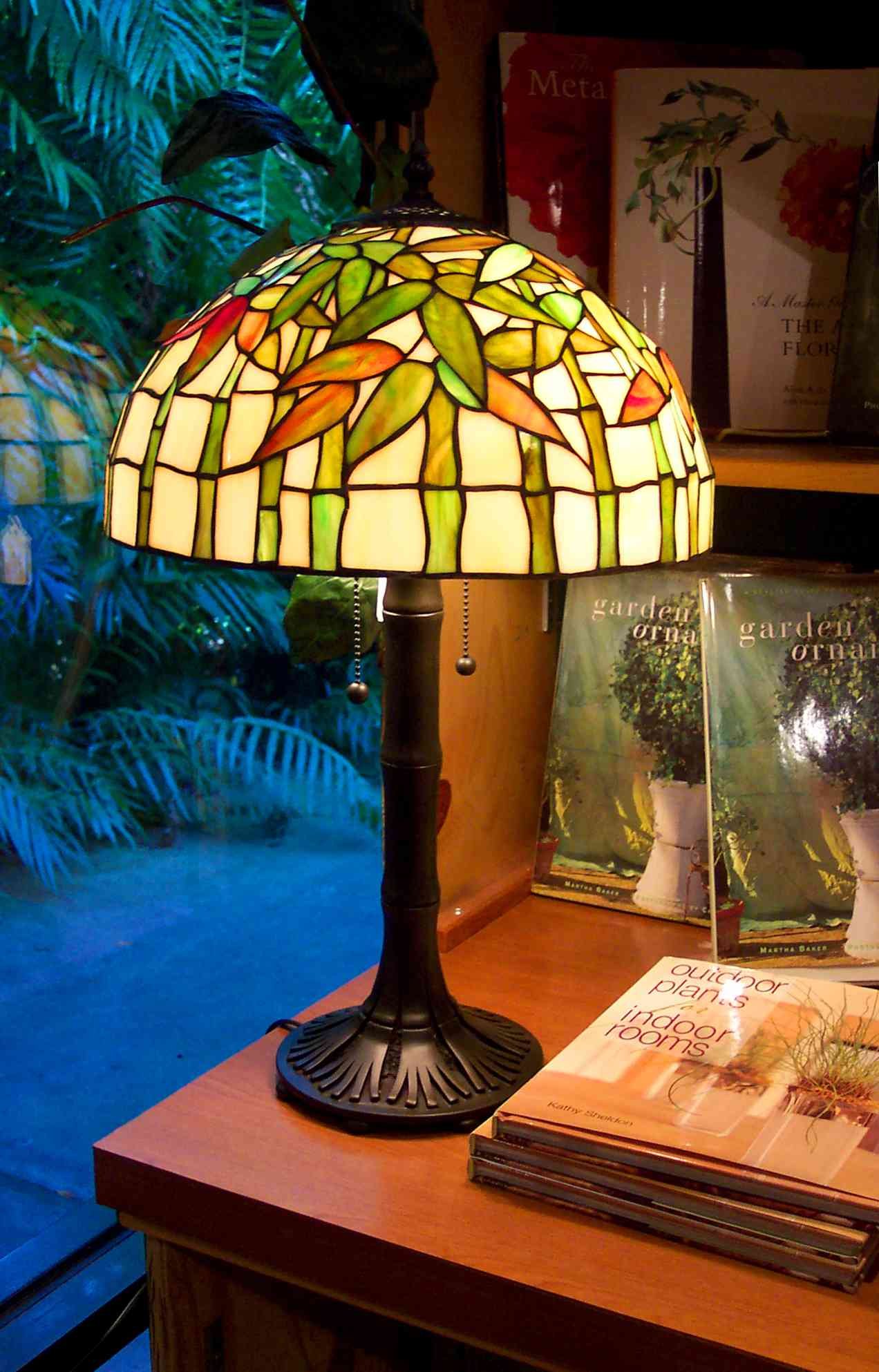
Marje / Getty Images
In the United States, art nouveau is often referred to as Tiffany style, thanks to the high-profile work of art nouveau jeweler and glassmaker Louis Comfort Tiffany (1848-1933), creator of the iconic Tiffany lamp.
Art Nouveau architecture preceded art deco architecture, which became a dominant style in the 1920s, differentiating itself with bold, striking, geometrical forms and high-profile skyscrapers such as the Chrysler Building in NYC.
Key Characteristics of Art Nouveau Architecture
- Art nouveau style is inspired by the natural world, characterized by sinuous, sculptural, organic shapes, arches, curving lines, and sensual ornamentation.
- Common motifs include stylized versions of leaves, flowers, vines, insects, animals, and other natural elements.
- Common materials in art nouveau architecture include steel, iron, and glass.
- Decorative elements found on the exterior and interior of buildings include intricate mosaic work and stained glass.
- Art nouveau designs are punctuated by undulating asymmetrical lines from the natural world.
Examples of Art Nouveau Architecture
Art nouveau architecture is an international style concentrated in Europe and the United States that took on varying names and characteristics as it spread. Below are some prime examples of the art nouveau style.
Agoudas Hakehilos Synagogue
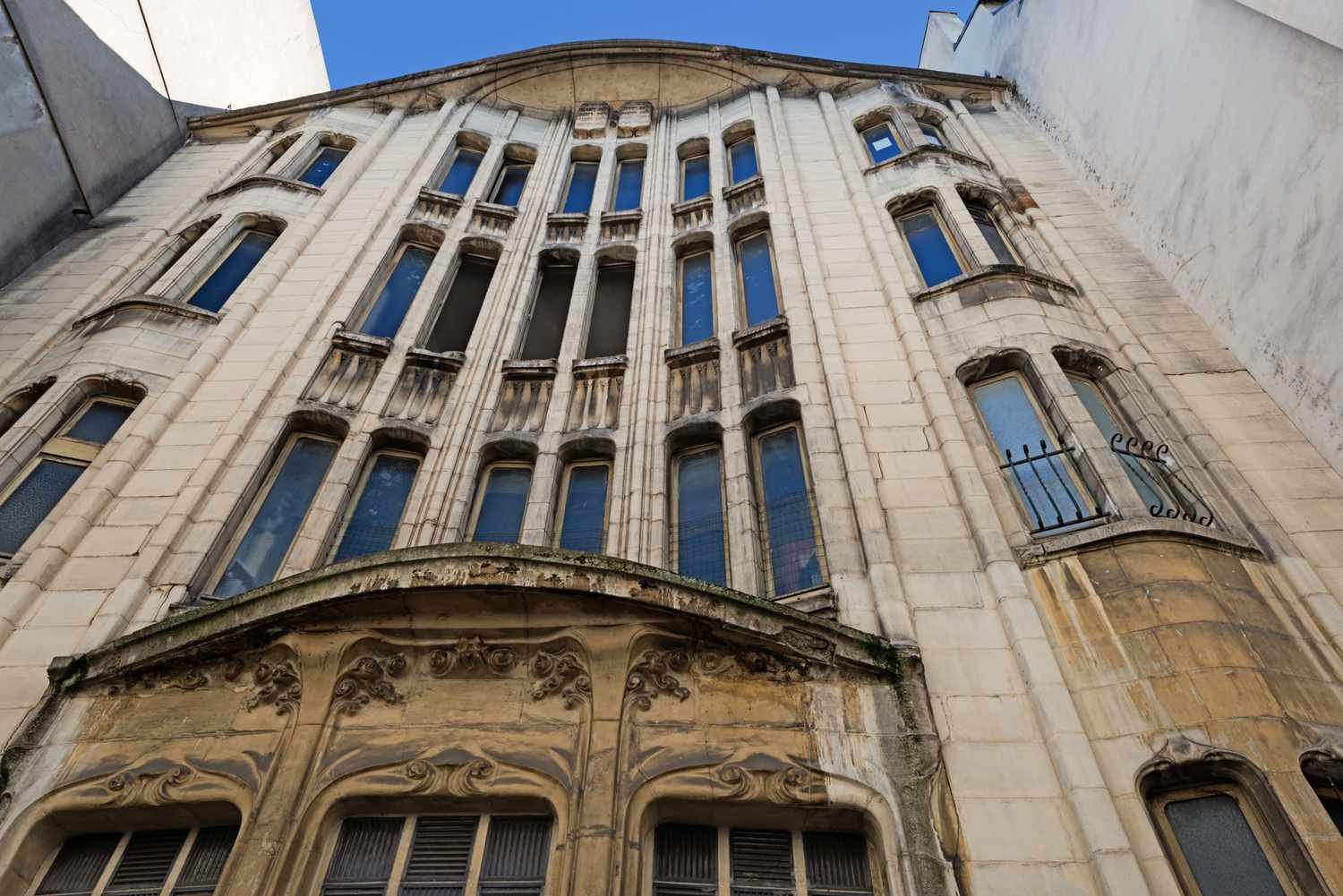
Credit:
Onyshchenko / Getty Images
Art nouveau architect and designer Hector Guimard designed the Agoudas Hakehilos Synagogue. The only religious building designed by the famous architect was built in the Marais district of Paris between 1913 and 1914, characterized by elongated windows and vertical columns.
Old England Department Store
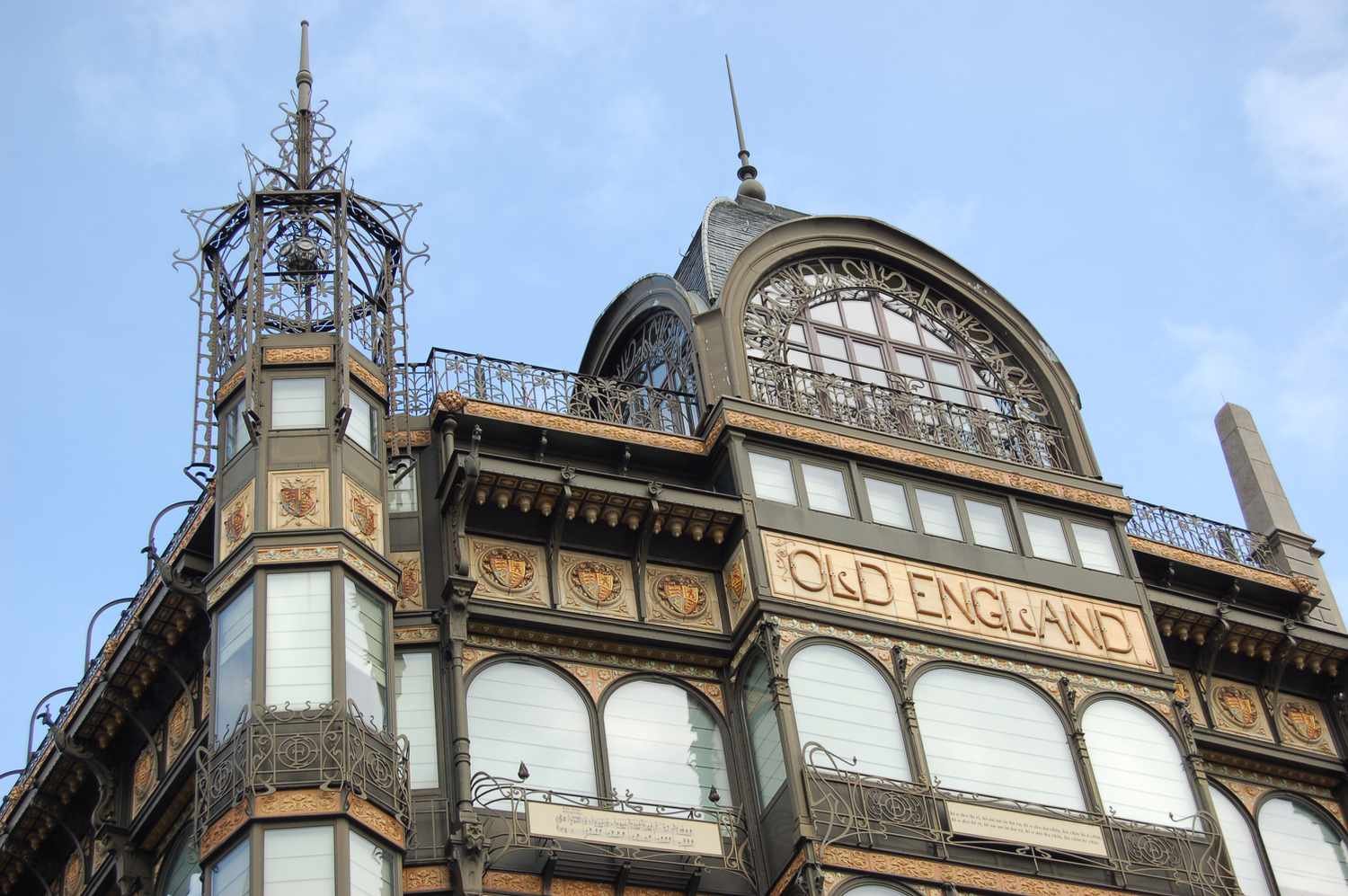
Credit:
jmbrasseur / Getty Images
Built in 1899, the former Old England department store, currently known as The Museum of Musical Instruments designed by architect Paul Saintenoy, is a stand-out piece of art nouveau architecture in Brussels, Belgium. The decorative art nouveau facade includes intricate wrought iron detailing and glazed curved glass windows designed to bathe the interior with light.
Hôtel Tassel Facade
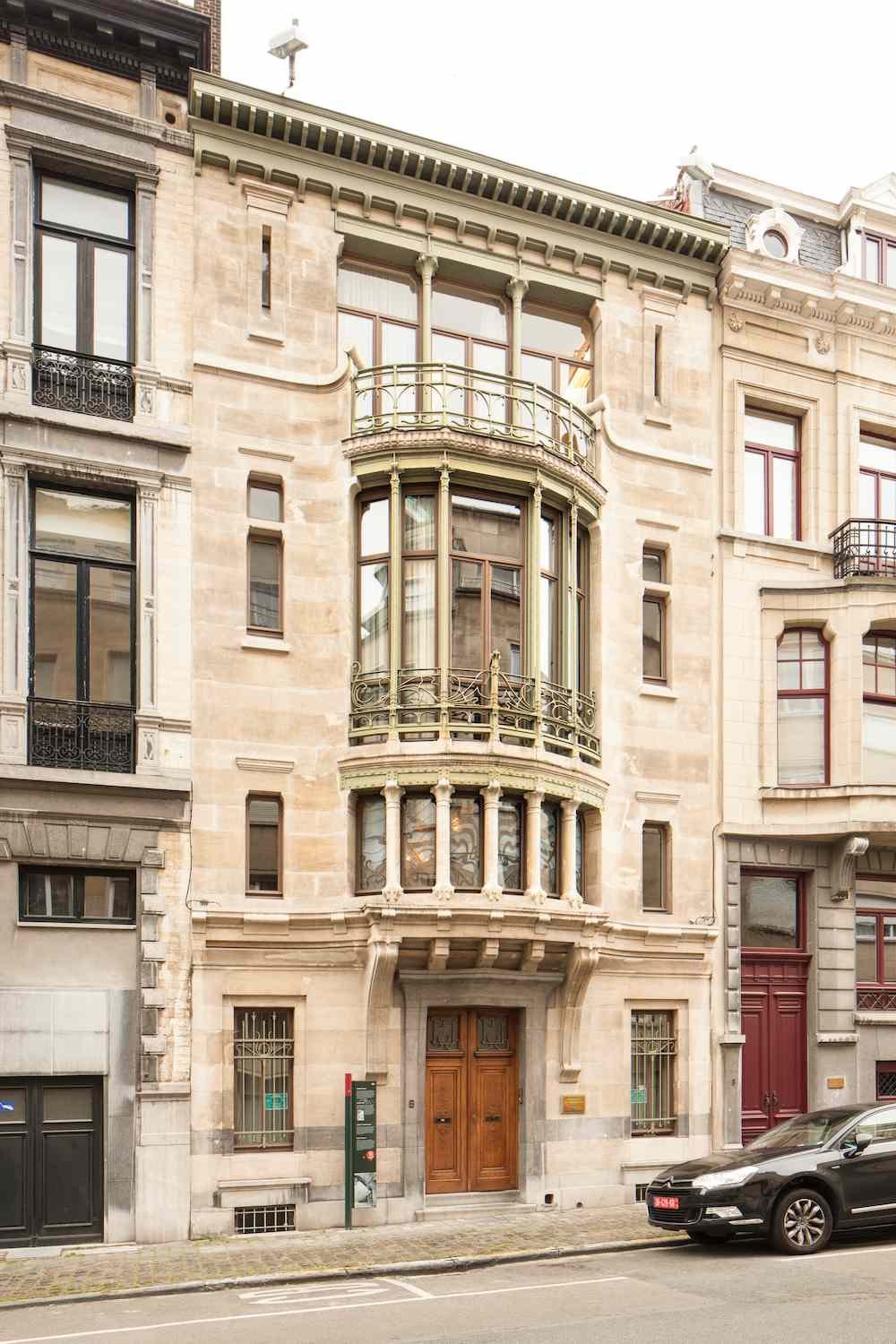
Alan John Ainsworth / Heritage Images / Getty Images
Architect and designer Victor Horta designed what many consider the first Art Nouveau building, the magnificent Hôtel Tassel, in the early 1890s. It now forms part of a UNESCO World Heritage Site in Brussels, Belgium.
Hôtel Tassel Interior
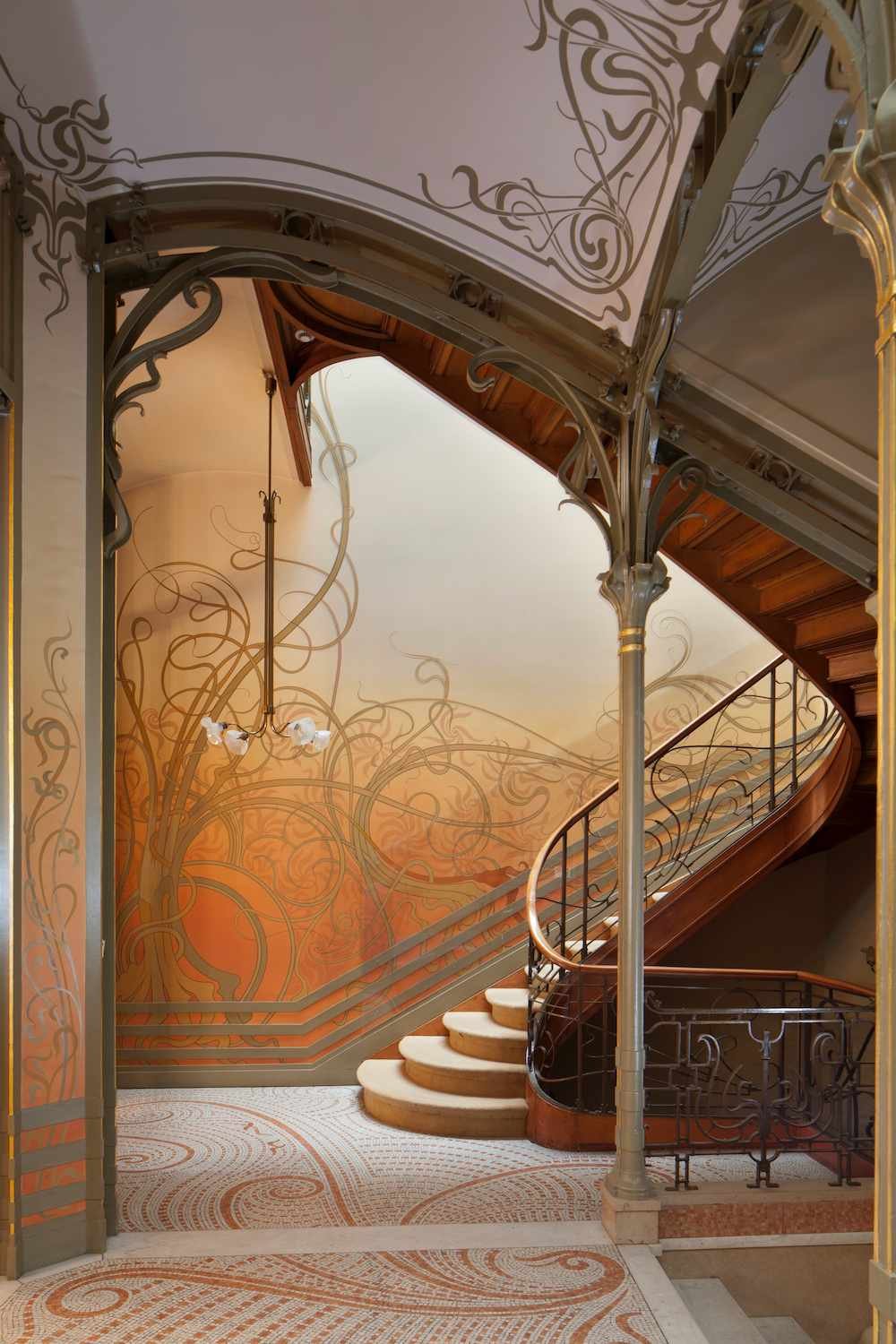
Alan John Ainsworth / Heritage Images / Getty Images
The art nouveau interior of the Hôtel Tassel features highly decorative finishes with nature-inspired forms, sinuous curves, a wrought iron staircase, and mosaic tile flooring.
Hôtel Tassel Stained Glass
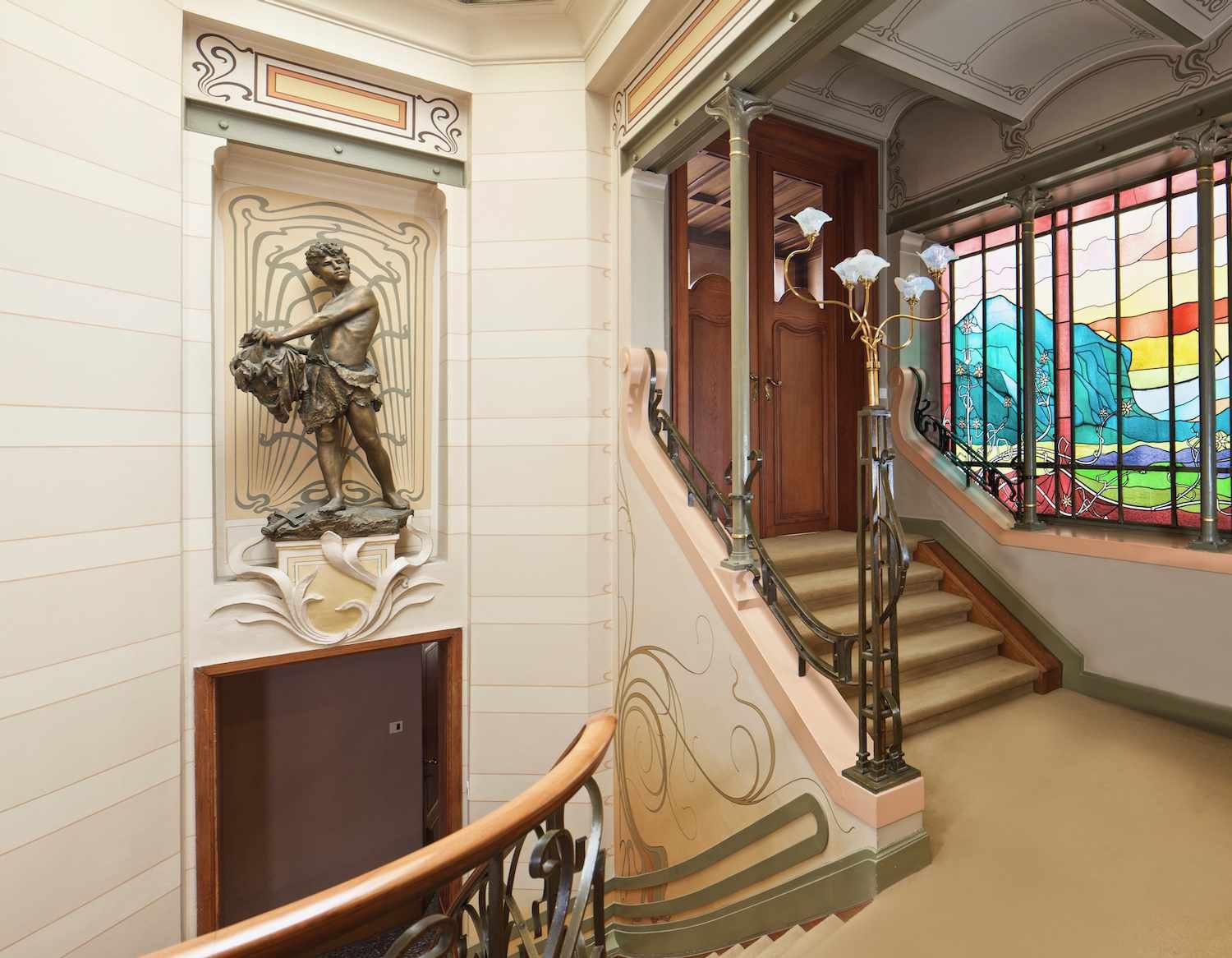
Alan John Ainsworth / Heritage Images / Getty Images
The interior of Hôtel Tassel also features striking stained glass windows with nature-inspired forms and colors that add embellishment and diffuse light into the interior.
Paris Métro Stations
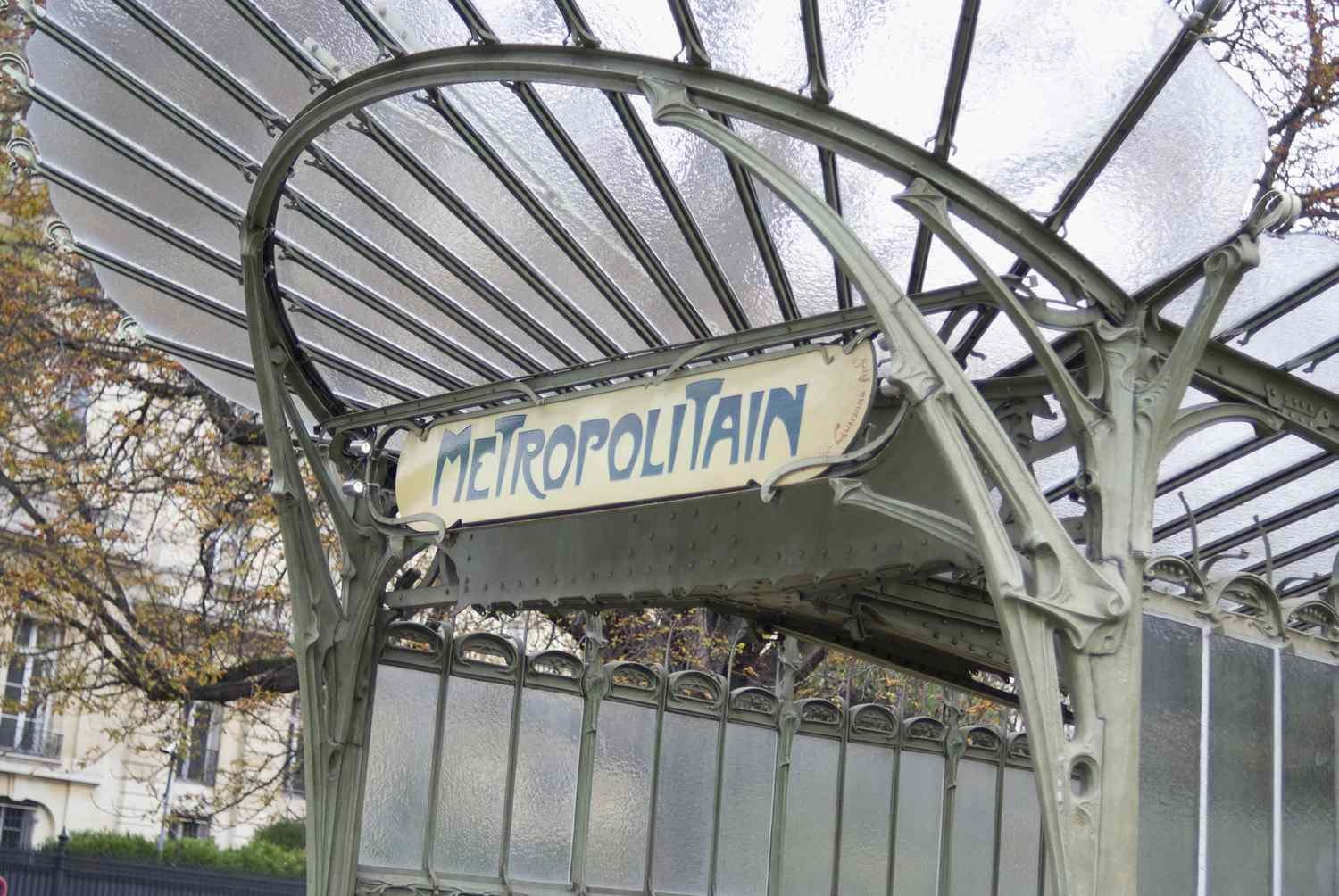
Credit:
MIXA Co. Ltd. / Getty Images
Art nouveau architect and designer Hector Guimard built 50 buildings between 1890 and 1930. But he is best known as the man responsible for the curved glass and wrought iron canopies that marked the entrances to the Paris Métro and defined the city in the imaginations of people worldwide.
Casa Batlló
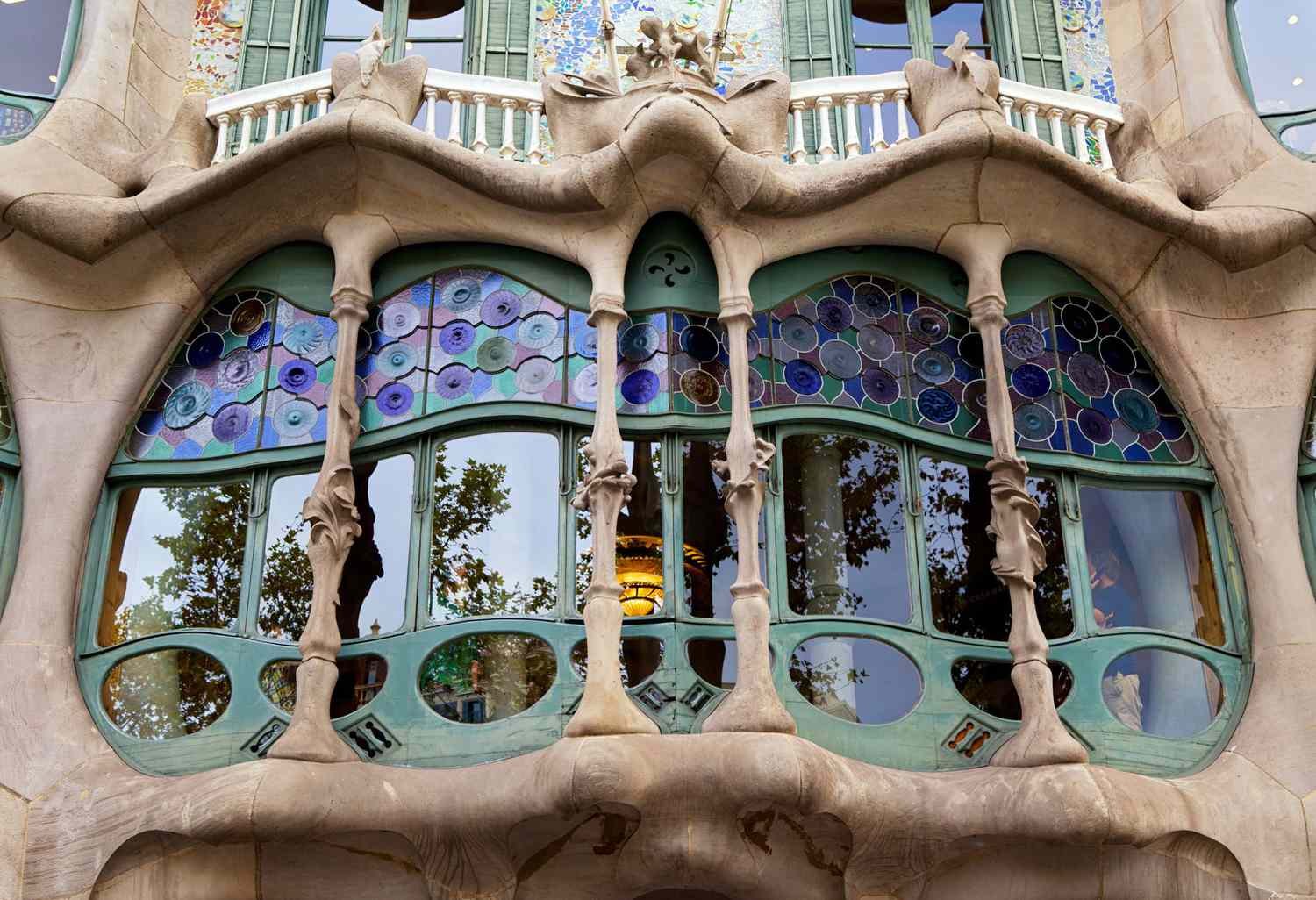
Jeremy Villasis / Getty Images
The Casa Batlló in Barcelona, Spain was designed by Catalan architect Antoni Gaudí (1852–1926), whose work took art nouveau to astonishing heights. Part of a UNESCO World Heritage Site, the building is characterized by its atypical oval windows, sculpted stonework, and lack of straight lines.
Where To Find Art Nouveau Architecture
- Riga: One-third of the architecture in this Latvian city is art nouveau, making it the largest concentration of this style of architecture in Europe. Some of the most striking examples designed by architect Mikhail Eisenstein are located on Albert Street.
- Paris: While Paris is best known for its 19th-century Haussmannian architecture, leading art nouveau architect and designer Hector Guimard built 50 buildings between 1890 and 1930.
- Barcelona: The most noteworthy and beloved buildings in this Spanish city were designed by Catalan architect Antoni Gaudí (1852–1926).
- Austria: Designed by architect Joseph Maria Olbrich, the 1898 Secession Building in Vienna is a prime example of secession style, a variation of art nouveau. It features the well-known Beethoven Frieze by Gustav Klimt, one of the artists most associated with art nouveau.
- Glasgow: One of Scottish architect Charles Rennie Mackintosh’s (1868-1928) masterpieces was the Glasgow School of Art, which was influenced by British art nouveau style and mixed with Scottish flair.
- Brussels: Architect and designer Victor Horta designed what many consider the first art nouveau building, the Hôtel Tassel, in the early 1890s in this Belgian city. It now forms part of a UNESCO World Heritage Site.
-
What is the difference between art deco and art nouveau styles?
Art nouveau is a late 19th and early 20th-century aesthetic movement influenced by the natural world and defined by organic shapes and curved lines. Art deco replaced art nouveau in the early 20th century and featured sharp lines, geometric shapes, bold colors, luxurious materials, and the promise of technology.
-
What are the interior features of art nouveau?
Art nouveau features stylized motifs of leaves, flowers, vines, insects, animals, and other natural elements on furniture, walls, windows, and decor. Other decorative features include mosaic work, wrought iron, and glasswork.
-
What does an art nouveau house look like?
An art nouveau house includes organic curving lines on windows and door frames, decorative motifs of natural elements, wrought iron balconies, mosaic floors, curved staircases, and areas of stained glass.



